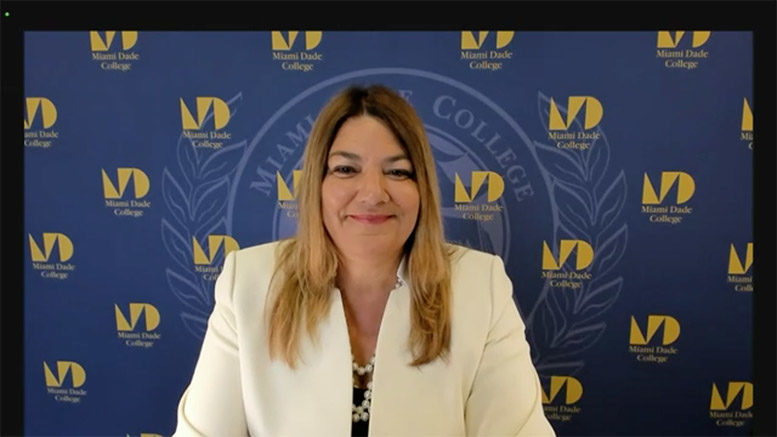The Senate Health, Education, Labor and Pensions Committee on Thursday heard from a handful of college and university leaders about their institutions’ response to the pandemic, from expanding emergency help to students, to preparing for a return to campuses this fall.
Madeline Pumariega, president of Miami Dade College (MDC), highlighted how the Florida college used most of the $50 million it received from the first round of federal Covid rescue funding to help its students deal with myriad issues, such as accessing technology and addressing food and housing insecurity.
The college also has played a crucial role in providing low-cost options for individuals to prepare for careers and available jobs, including retaining those who lost jobs during the pandemic for new opportunities, Pumariega said. In addition, MDC has served as a federal vaccination site, administering more than 350,000 Covid vaccines so far.
Officials from the University of California, Los Angeles and Xavier University of Louisiana gave similar accounts of the challenges their students faced, and how the institutions used federal rescue and recovery funds.
Sen. Patty Murray (D-Washington), chair of the committee, said congressional efforts have helped students, but they will continue to need assistance when the pandemic subsides.
“The federal relief funds provided to colleges was a powerful and important step forward,” Murray said in her opening statement. “But if we truly want to help students succeed, then we have to do more than simply return to normal. … If this pandemic has taught us anything, it is that we have to do better than normal.”
Murray encouraged committee members to consider proposals to offer free community college and doubling Pell grants.
Questioning the need
Ranking member Sen. Richard Burr (R-North Carolina) questioned whether colleges received too much money through rescue and recovery legislation. He insinuated that many colleges are sitting on their allotments. As of the first week of June, $53 billion of the $76 billion provided directly to higher education through three pandemic funding laws was still not spent.
“That’s 70% of the money still sitting. It’s waiting to go out the door,” he said. “This makes me questions if such institutions truly needed all this money.”
On Wednesday, Senate GOP appropriators raised the same question during a budget hearing with U.S. Education Secretary Miguel Cardona. The secretary responded that many schools are still assessing how best to use the funds, and they have up to a year to use each allotment. Some of them may have decided to gradually use the funds and save some for later use. Cardona also noted that schools often don’t pay vendors until services are complete.
Criticism of free community college
Burr also reiterated a criticism of the free community college proposal that was floated at Wednesday’s budget hearing: It is not needed because Pell grants and initiatives such as College Promise programs already cover most of the costs for community college students. He said that in many states, a Pell grant can fully cover tuition and fees at a community college.
Burr added that there has been little conversation in Congress about how to control college costs and student debt. Making college free and canceling student loan debt may be good talking points, but some states like West Virginia and Arizona have already made community college cost less than the average Pell Grant award, he said.
Keeping mental health in mind
College leaders at the hearing noted that the needs of students will change when they return to the classroom, but they will not diminish, adding that many students already faced significant challenges prior to the pandemic.
Murray and Sen. Tim Kaine (D-Virginia) wanted to know what colleges were doing to help students who struggled with mental health. Isolation, financial pressures, self-health and the health of family and friends all weighed heavy on students’ minds, they said.
Pumariega said MDC added more mental health care specialists, telehealth services, partnered with more community organizations to help students, and instituting an early alert system that allows faculty to recognize students who may need help.
She added that she supports expanding Pell, such as doubling the maximum award. She also would like Congress to allow students to use Pell grants for short-term programs, which appeals to many individuals who may want to return to college to upgrade their skills or learn new ones, but other obligations, such as work and family, are keeping them from enrolling in longer programs.

